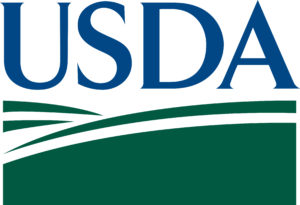 USDA News Release
July 19, 2018
USDA News Release
July 19, 2018
WASHINGTON, July 19, 2018 – The U.S. Department of Agriculture (USDA) today announced plans to extend two of its landmark water quality initiatives for five years. The Mississippi River Basin Healthy Watersheds Initiative (MRBI) and the National Water Quality Initiative (NWQI) have played a pivotal role in accelerating conservation in water quality by providing targeted funding and technical resources to agricultural producers in the areas that need it most.
“These two initiatives have steadily demonstrated tremendous benefits across America’s landscape and water bodies,” said Bill Northey, USDA Undersecretary for Farm Production and Conservation. “By focusing resources where we can have the best impacts, we’re improving the quality of rivers and streams across the country while also giving producers the tools they need to make good investments on their working lands.”
Through both initiatives, USDA’s Natural Resources Conservation Service (NRCS) works with producers in targeted watersheds to implement conservation practices that prevent runoff of sediment and nutrients, which can degrade water quality.
These initiatives currently help producers improve water quality in more than 350 watersheds across the country. To date, at least 10 water bodies have been removed or scheduled for removal from the nation’s list of impaired streams.
NRCS will continue to update and expand their approach to both initiatives based on recommendations from conservation partners and staff. Some notable updates include:
- Providing greater technical assistance for watershed assessment in MRBI to help ensure critical source areas are identified;
- Establishing watershed goals and interim metrics; and
- Ensuring that an outreach strategy is in place.
NRCS will also provide greater certainty for NWQI financial assistance by utilizing multi-year budgets, not to exceed five years, for priority watersheds. The initiative will also expand the focus from only water bodies impaired under the Clean Water Act to a broader group of water bodies, particularly those that provide drinking water.
Targeted Watersheds
Improved water quality is due, in large part, to the agency’s targeted small watershed approach, which focuses resources on the most critical areas to maximize conservation impact and allow producers to be natural resource stewards.
“Our data shows that targeting works,” Northey said.
Through USDA’s Conservation Effects Assessment Project, cropland models demonstrate that conservation on cropland throughout the entire Mississippi River basin has reduced nitrogen and sediment loading to the Gulf of Mexico by 28 percent and 45 percent, respectively, over what would be lost without conservation systems in place.
Assistance Available for Farmers
Landscape conservation initiatives are helping landowners, like Tim Smith  , target vulnerable areas and develop nutrient and sediment loss reductions strategies. Smith, a corn and soybean farmer in Eagle Grove, Iowa, said he has cut nitrate levels in half from the water leaving his fields by modifying management systems on his 800-acre farm. With help from NRCS, Smith has planted cover crops and limit tillage, which help prevent erosion and runoff of nutrients and sediment into the nearby Boone River watershed.
, target vulnerable areas and develop nutrient and sediment loss reductions strategies. Smith, a corn and soybean farmer in Eagle Grove, Iowa, said he has cut nitrate levels in half from the water leaving his fields by modifying management systems on his 800-acre farm. With help from NRCS, Smith has planted cover crops and limit tillage, which help prevent erosion and runoff of nutrients and sediment into the nearby Boone River watershed.
Similarly, the residents of Kutztown, Pennsylvania, benefitted when farmers upstream from their town voluntarily worked with NRCS to adopt a number of practices to improve water quality along Saucony Creek. Two years after the city’s water treatment plant was updated with equipment to remove nitrates from raw water, the plant is running at minimum capacity due to the conservation improvements adopted by nearby farmers.
Agricultural producers interested in learning more are encouraged to contact their local USDA service center or visit the NRCS national website at www.nrcs.usda.gov.
Contact: NRCS Public Affairs, (202) 720-3210
https://www.nrcs.usda.gov/wps/portal/nrcs/detail/national/newsroom/releases/?cid=NRCSEPRD1410229
